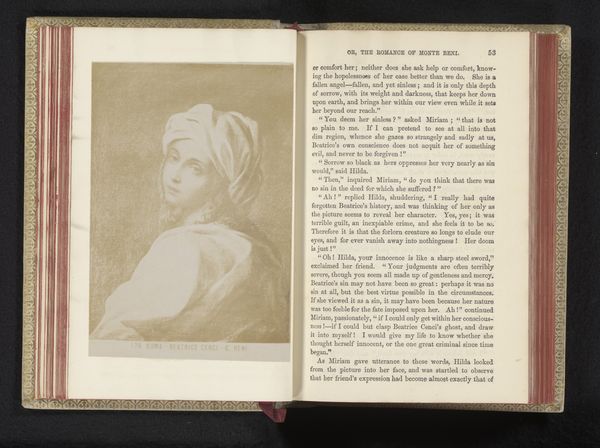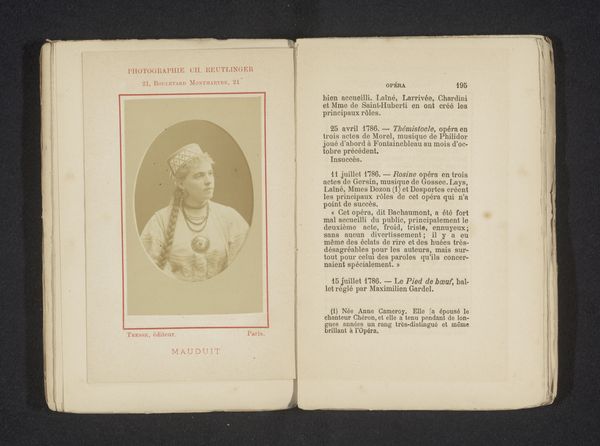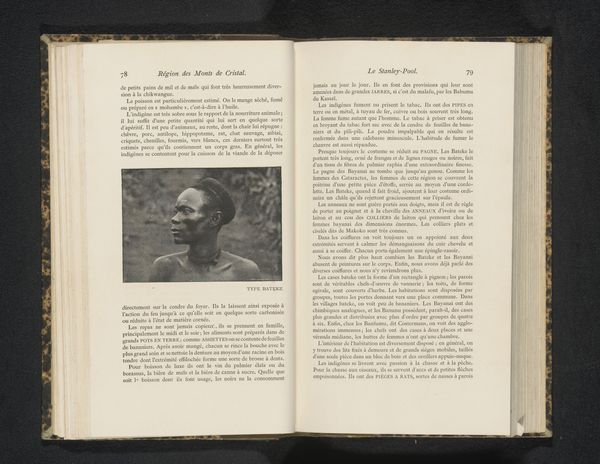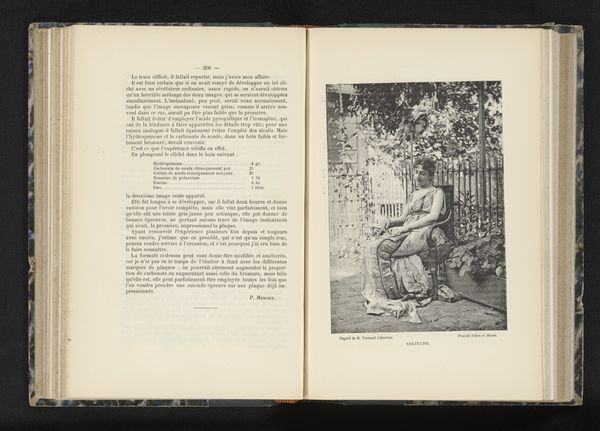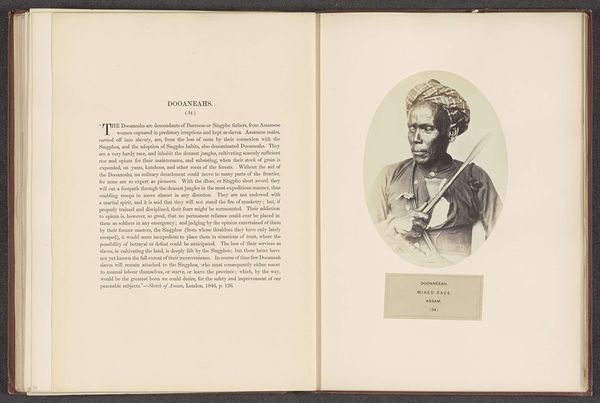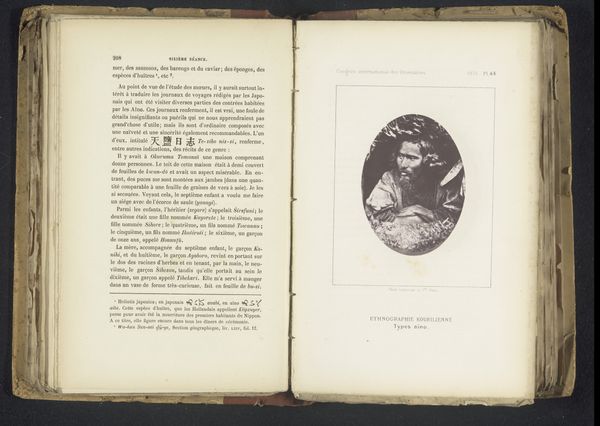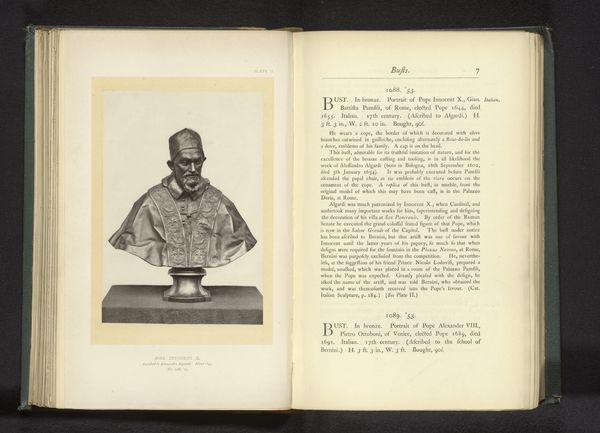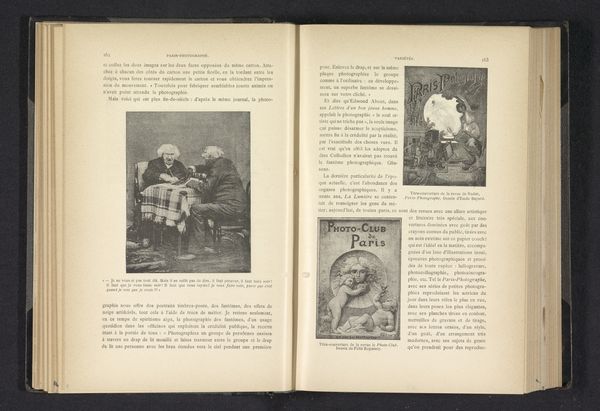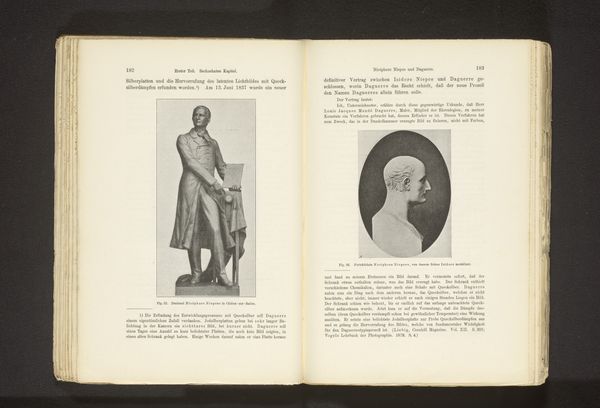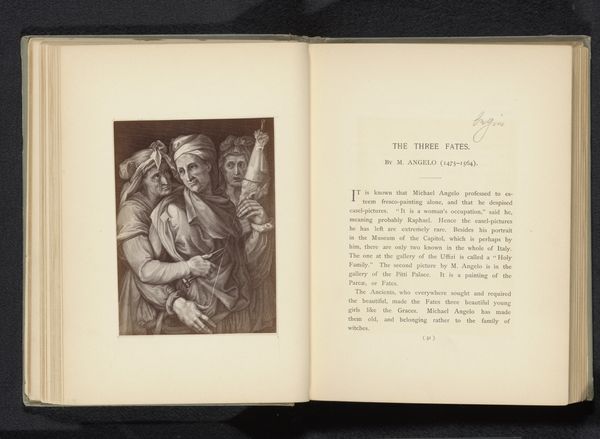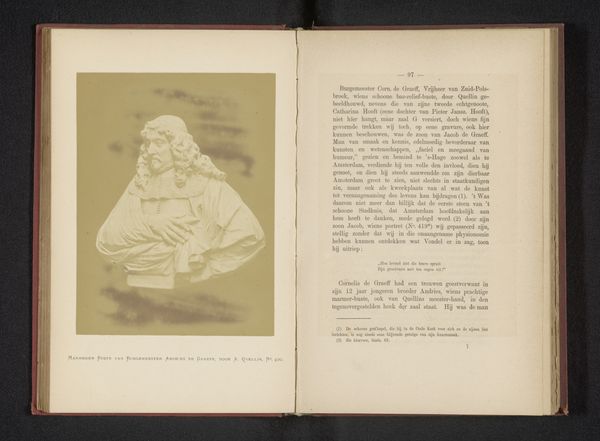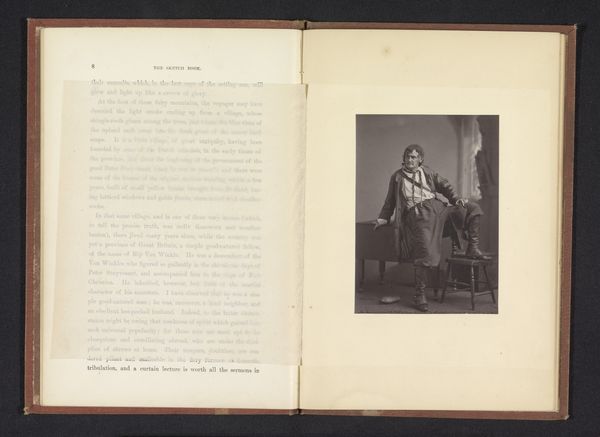
Reproductie van een gravure van een portret van een onbekende vrouw before 1892
0:00
0:00
print, engraving
#
portrait
# print
#
text
#
genre-painting
#
engraving
Dimensions: height 108 mm, width 97 mm
Copyright: Rijks Museum: Open Domain
Curator: Let's consider this "Reproductie van een gravure van een portret van een onbekende vrouw," a print made before 1892. It presents an intriguing image of an elderly woman. Editor: My immediate impression is one of starkness. The fine lines of the engraving, the contrasting tones... it feels incredibly raw, like a study in hardship. What do you make of the sitter’s place within the period's visual culture? Curator: These kinds of portraits circulated widely through printed media, and they offered different modes of social representation, both reinforcing and questioning societal norms. Think about the power dynamics: who commissions, who disseminates, and whose story gets told—or perhaps exploited—through these images. Editor: Exactly. It's crucial to think about the engraving process itself, about the labor that went into this meticulous reproduction. The cross-hatching, the precise control of the burin... it speaks of skilled craftsmanship, almost painstaking effort in the creation of what's ultimately a mass-produced object. What kind of metal would they have used? How were these distributed? Curator: That tension between craft and mass production is spot-on. Engravings like this existed in a fascinating space: functioning as affordable art for the masses while relying on specialized labor. Distribution networks were complex, tied to print shops and even colporteurs who would hawk these from town to town. Editor: So it begs the question: Did it really democratize art, or just commodify images of particular subjects and make them accessible to all? What was the consumption? To be considered from a domestic position? Curator: It's a push and pull, a democratizing impulse with complicated social implications. The accessibility of such portraits altered how individuals perceived themselves and others. They provided, on a mass scale, recognizable faces for identification or for judgement. Editor: This makes me think again about her direct stare – and the artist behind her portrayal, the process that mediated this look. Curator: Absolutely. This work serves as a potent reminder of how the intersection of artistic technique, mass production, and social power shape our perception. Editor: It also reminds me to stay conscious that even reproducible prints can offer some very tangible details of our past and can connect us with these peoples lives, however partial that connection may be.
Comments
No comments
Be the first to comment and join the conversation on the ultimate creative platform.
